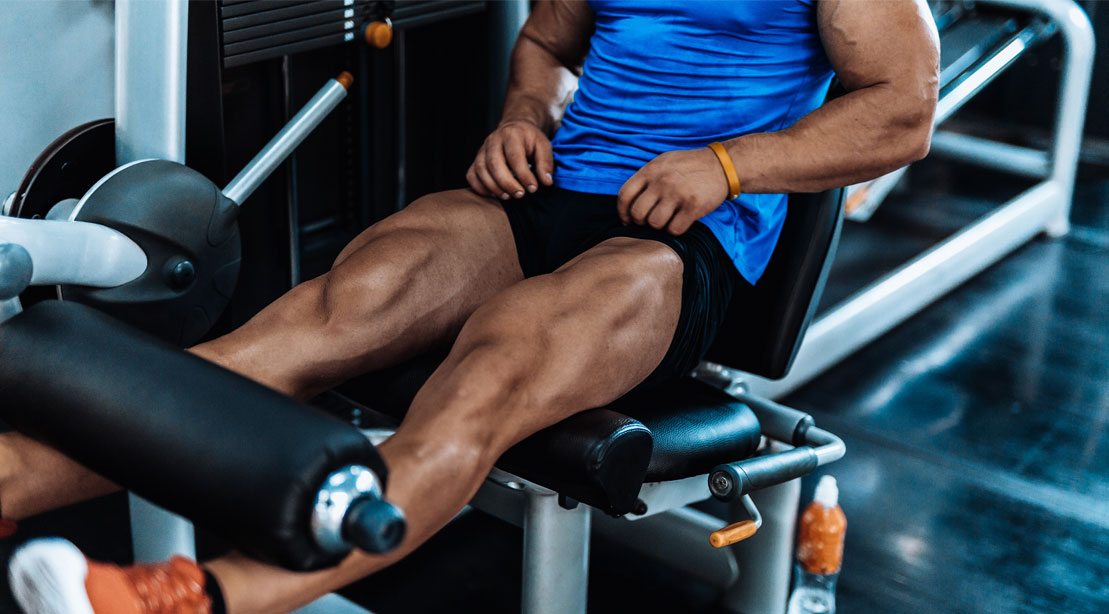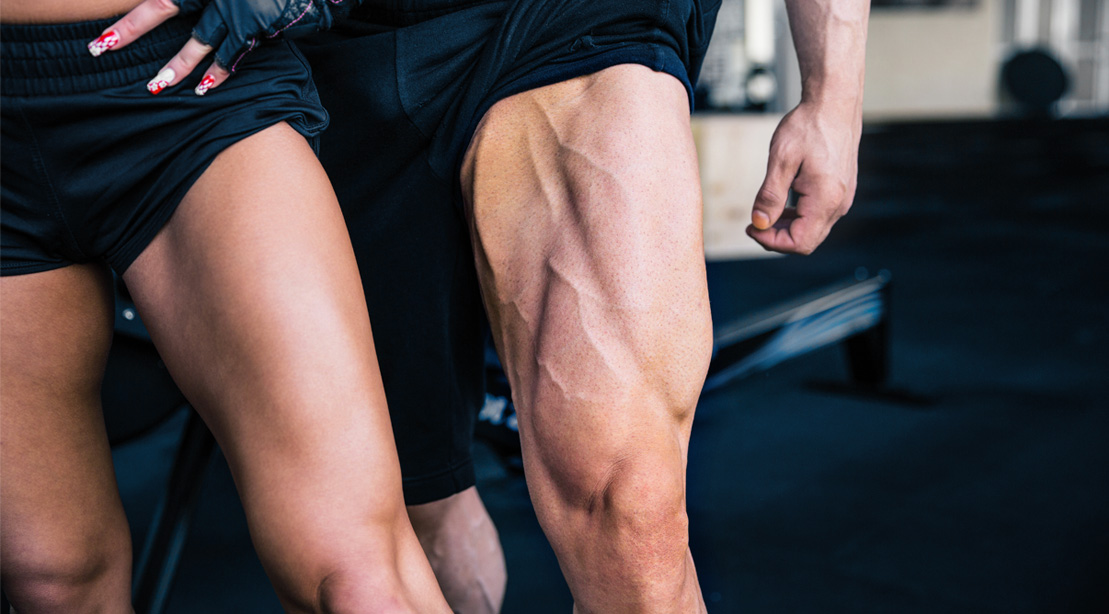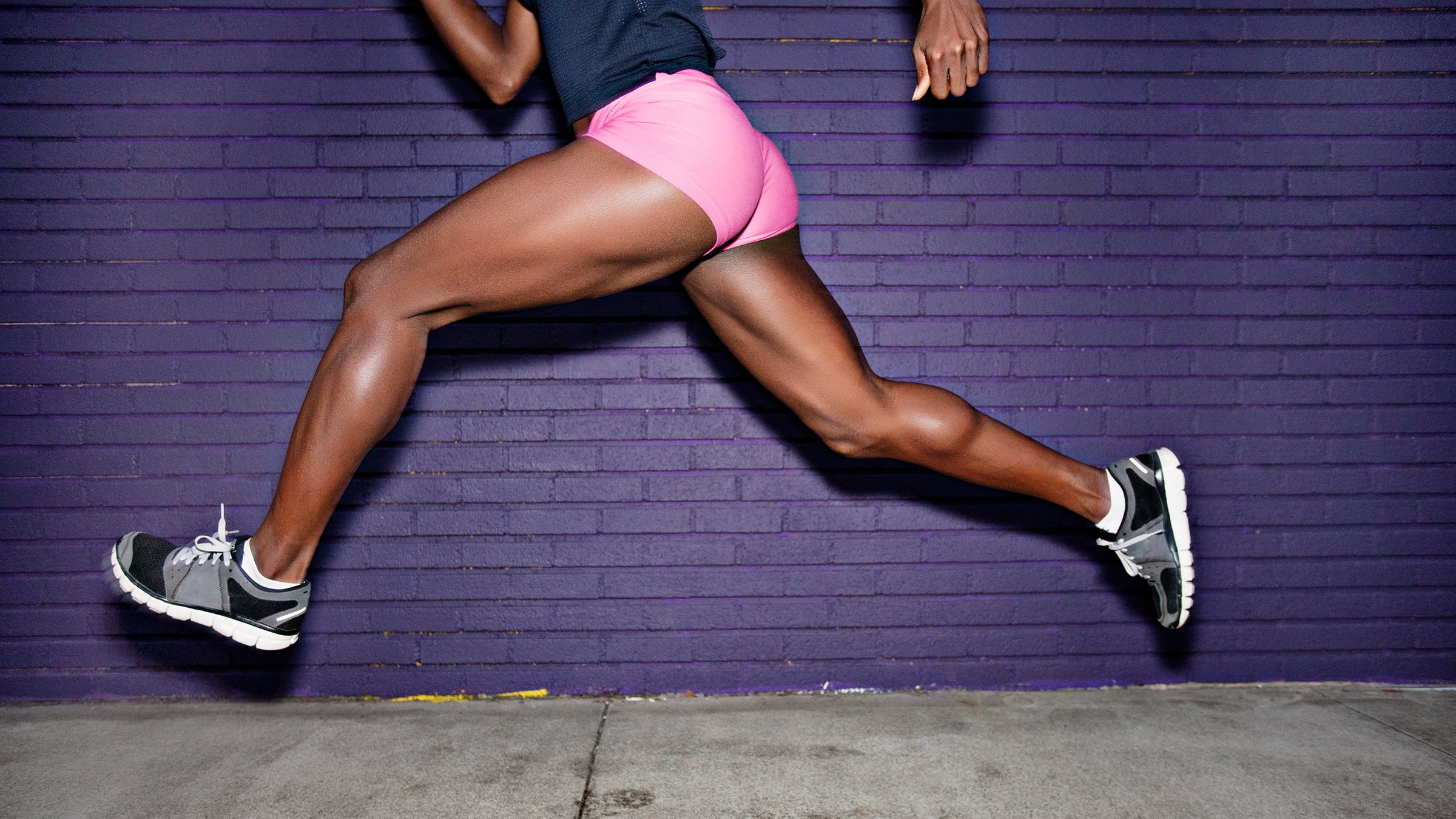Are you looking to build strong legs for better performance? Well, you’re in luck because in this article, we’re going to dive into the world of leg workouts and show you how to strengthen those limbs of yours.
Now, I know what you’re thinking – why do I need big legs? The truth is, having well-developed leg muscles can improve your overall athletic performance, help prevent injuries, and even enhance your everyday activities. So, whether you’re a professional athlete or just someone looking to stay fit, building strong legs should be a priority.
Now, let’s get down to business. When it comes to building strong legs, there are numerous exercises and training techniques that can help you achieve your goals. From squats and lunges to leg press machines and calf raises, the options are endless.
Each exercise targets different muscle groups within your legs, ensuring a well-rounded and balanced leg workout. In our upcoming article, we’ll take a closer look at these exercises and give you tips on how to perform them correctly for maximum results.
So, if you’re ready to take your leg strength to the next level, stay tuned for more valuable insights! Building Strong Legs for Better Performance

Why Strong Legs Are Important
Strong legs are essential for overall athletic performance and physical health. Whether you’re an athlete looking to enhance your sports performance or simply want to improve your balance and stability, developing strong legs should be a priority. In addition to athletic benefits, strong legs also support joint health, ensuring that you can move with ease and prevent injuries. Let’s explore the importance of strong legs in more detail.
Enhances Athletic Performance
Having strong legs can greatly enhance your athletic performance across different sports. Whether you’re a runner needing explosive power, a basketball player requiring agility, or a weightlifter relying on strength, strong legs are crucial. With powerful leg muscles, you’ll be able to generate more force, execute explosive movements, and maintain stability during dynamic activities. Strong legs provide a solid foundation for superior athletic performance.
Improves Balance and Stability
A well-developed lower body, including the legs, helps improve your balance and stability. Strong leg muscles support your body’s stability by providing a sturdy base of support. This is especially important in activities that require change of direction, such as tennis or soccer. By strengthening your legs, you enhance your ability to maintain balance, reducing the risk of falls and potential injuries.
Supports Joint Health
Strong legs also play a vital role in supporting joint health. The muscles surrounding the knee joint, such as the quadriceps and hamstrings, act as shock absorbers, providing stability and protection to the joint. When these muscles are weak, the risk of knee injuries, such as ligament tears, increases. Building strong leg muscles helps maintain proper joint alignment and reduces stress on the knees, hips, and ankles, promoting long-term joint health.
Key Leg Muscles to Target
To build strong legs, it’s important to focus on developing key leg muscles. Here are the primary leg muscles you should target during your workouts:
Quadriceps
The quadriceps, located at the front of the thigh, are responsible for knee extension. These muscles are heavily utilized in activities that involve squatting, jumping, and running. Exercises such as squats and lunges are effective in targeting the quadriceps.
Hamstrings
The hamstrings, located at the back of the thigh, are responsible for knee flexion and hip extension. These muscles are engaged during movements like bending the knee and lifting the leg backward. Exercises such as deadlifts and hamstring curls are effective in targeting the hamstrings.
Calves
The calf muscles are located on the back of the lower leg and include the gastrocnemius and soleus muscles. These muscles are responsible for ankle plantarflexion, which allows you to push off the ground during walking, running, and jumping. Calf raises, both seated and standing, are effective exercises for developing the calves.
Glutes
The gluteal muscles, including the gluteus maximus, medius, and minimus, are responsible for hip extension, abduction, and external rotation. Strong gluteal muscles contribute to overall lower body strength and stability. Exercises such as glute bridges and squats target the glutes effectively.

Effective Leg Exercises
To build strong legs, incorporating effective leg exercises into your workout routine is crucial. Here are some exercises that target different leg muscles:
Squats
Squats are a compound exercise that targets the quadriceps, hamstrings, glutes, and calves. This exercise involves bending your knees while keeping your back straight, then returning to a standing position. Squats can be performed with bodyweight, dumbbells, or a barbell for added resistance.
Lunges
Lunges primarily target the quadriceps, hamstrings, and glutes. This exercise involves stepping forward or backward, bending both knees to a 90-degree angle, and then returning to the starting position. Lunges can be performed with bodyweight, dumbbells, or a barbell.
Deadlifts
Deadlifts primarily target the hamstrings, glutes, and lower back. This exercise involves lifting a barbell or dumbbells from the ground to a standing position, maintaining a straight back throughout the movement. Deadlifts require proper form and should be performed with caution.
Calf Raises
Calf raises specifically target the calf muscles. This exercise involves raising your heels off the ground while standing, then returning to the starting position. Calf raises can be performed with bodyweight, on a step or elevated surface, or with weights for added resistance.
Glute Bridges
Glute bridges primarily target the gluteal muscles. This exercise involves lying on your back with your knees bent, then pushing your hips upward until your body forms a straight line from your knees to your shoulders. Glute bridges can be performed with bodyweight or with a barbell placed on your hips for added resistance.
Importance of Proper Form
When performing leg exercises, it’s crucial to prioritize proper form. Here’s why:
Prevents Injury
Maintaining proper form during leg exercises helps prevent injuries. Incorrect technique can put unnecessary stress on your joints and increase the risk of strains, sprains, and other injuries. Focus on maintaining proper alignment, engaging the correct muscles, and avoiding overloading a particular area.
Maximizes Muscle Activation
Proper form ensures that the targeted muscles are effectively activated during exercises. By maintaining correct alignment and engaging the targeted muscles, you maximize the benefits of each exercise. This helps facilitate muscle growth and strength gains.
Ensures Balanced Development
Proper form helps ensure balanced muscle development. By using proper technique and engaging specific muscle groups, you can prevent muscle imbalances, where certain muscles become stronger than others. Muscle imbalances can lead to poor posture and increased risk of injury.

Training Frequency and Volume
When it comes to training your legs, finding the right balance between frequency and volume is important. Here are some key factors to consider:
Finding the Right Balance
Training frequency refers to how often you train your legs, while volume refers to the total number of sets and reps performed. It’s important to find the right balance based on your goals, fitness level, and recovery capacity. Start with 2-3 leg workouts per week and gradually increase frequency or volume as your strength and endurance improve.
Progressive Overload
To continue building strength and muscle, it’s important to progressively overload your leg muscles. This means gradually increasing the weight, reps, or difficulty of your exercises over time. Progressive overload stimulates muscle growth and strength gains, helping you achieve your desired results.
Rest and Recovery
Rest and recovery are crucial for optimal leg muscle development. Allow your legs sufficient time to rest and recover between workouts to avoid overtraining and reduce the risk of injury. Adequate sleep, proper nutrition, and active recovery activities, such as stretching or foam rolling, can aid in the recovery process.
Incorporating Plyometric Exercises
Plyometric exercises involve quick, explosive movements that require maximum muscle recruitment. Incorporating plyometric exercises into your leg workouts can provide additional benefits:
Plyometric Benefits
Plyometric exercises help improve explosive power, agility, and speed. They also enhance muscle coordination and reduce the risk of injury during dynamic movements. Plyometrics challenge your muscles and nervous system in a unique way, promoting overall athletic performance.
Examples of Plyometric Exercises
Some examples of plyometric exercises for the legs include jump squats, box jumps, and lateral bounds. These exercises involve explosive jumping or bounding movements that engage multiple leg muscles simultaneously. When performing plyometrics, ensure you have a solid foundation and proper form to prevent injuries.

Nutrition for Strong Legs
Proper nutrition is essential for building strong legs and supporting overall muscle development. Here are some key considerations:
Adequate Protein Intake
Protein is the building block of muscles. Ensure you consume sufficient protein to support muscle repair and growth. Good sources of protein include lean meats, poultry, fish, eggs, dairy products, legumes, and plant-based protein sources such as tofu and quinoa.
Nutrient Timing
Timing your nutrient intake around your workouts can optimize muscle recovery and growth. Consume a balanced meal or snack containing carbohydrates and protein before and after your leg workouts to provide your muscles with the necessary nutrients for repair and growth.
Hydration
Hydration plays a crucial role in muscle performance and recovery. Drink an adequate amount of water throughout the day to maintain optimal hydration levels. During intense workouts, consider consuming sports drinks or electrolyte-rich fluids to replenish lost minerals.
Benefits of Strong Legs Beyond Performance
Strong legs offer benefits beyond athletic performance. Here are some additional advantages:
Daily Functional Movements
Strong legs make everyday movements easier and more efficient. Whether it’s climbing stairs, carrying groceries, or simply getting out of a chair, having strong leg muscles allows you to perform these activities with ease and without excessive effort.
Injury Prevention in Everyday Life
Strong legs help reduce the risk of injuries during daily activities. By improving strength, balance, and stability, you’re less likely to experience falls, strains, and sprains that can occur during basic movements like walking or bending.
Enhanced Muscle Definition
Building strong leg muscles can also lead to enhanced muscle definition and an aesthetically pleasing physique. Strong, toned legs not only improve your overall appearance but also contribute to a higher level of self-confidence.

Common Mistakes to Avoid
To ensure optimal leg development and prevent setbacks, it’s important to avoid common mistakes that can hinder your progress. Here are some mistakes to watch out for:
Neglecting Mobility and Flexibility
Neglecting mobility and flexibility exercises can limit your range of motion and hinder your leg strength progress. Incorporate stretching, foam rolling, and mobility exercises into your routine to maintain flexibility and joint health.
Ignoring Proper Recovery Protocols
Allowing sufficient time for rest and recovery is crucial for preventing overtraining and injuries. Respect your body’s need for rest days and listen to any signs of fatigue or pain. Overtraining can lead to decreased performance and increased risk of injuries.
Overtraining
Training too frequently or with excessively high volume can be counterproductive and hinder your progress. It’s important to find the right balance between training, recovery, and periodization to prevent overuse injuries and allow for continuous improvement.
Conclusion
Building strong legs is crucial for enhancing athletic performance, improving balance and stability, and supporting joint health. By targeting key leg muscles through effective exercises, practicing proper form, and finding the right balance of training frequency and volume, you can develop strong and powerful legs.
Remember to prioritize rest and recovery, incorporate plyometric exercises, and maintain a nutritious diet to optimize your leg muscle development and overall performance. Start incorporating these principles into your leg training routine today and reap the numerous benefits strong legs have to offer.




